Are Ryegrass and Tall Fescue Seed Prices High?
I’ve received a lot of questions this fall regarding the prices of annual and perennial ryegrass … particularly related to price increases. In short, prices are higher. I called around the nation to 20 Southern States Cooperatives and independent garden centers and the consensus is that prices are up 5% to 10%. But why?
To explain the reasoning, you need to know that the majority of production occurs in Oregon. Wet fall weather in 2016 delayed or, in some cases, prevented planting of seed blocks. While annual ryegrass plantings in Oregon increased by 1%, that's below historical averages and results in increased demand, resulting in increased prices. Additionally, perennial ryegrass acres were down 14% in 2016, which certainly won’t meet demand. Tall fescue followed a similar trend, with acreage down 8% in 2016.
Will this trend continue into 2018? I wish I had that crystal ball, but alas, I do not. A lot will depend on the weather, which currently looks good with normal rainfall. Hopefully, acreage of seed blocks will be up as a result and prices will stabilize in late summer and fall 2018.

Hibiscus Gone Wild!
It’s always nice to tout the merits of a single plant, but occasionally, I enjoy touting the merits of a genus. Hibiscus spp. is worthy and I recently concluded a project whereby Center for Applied Nursery Research staff and I evaluated a number of hibiscus cultivars. I wish I could pick a winner, but alas, it's difficult to pick winners among a lot of 8- to 12-in. flowers. So we've posted the data and flower photos online for your viewing pleasure!
Hope you have fun deciding! Personally, I’m a Lady Baltimore fan …
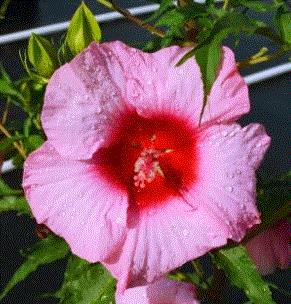
It's hard not to like Lady Baltimore with those lucious pink flowers ... so yummy!I
As for adaptability and overall traits, most hibiscus cultivars are hardy between Zones 4 to 10 and flower 60 to 90 days after new growth initiates (note: check individual cultivars for specifics). Full sun and soil moisture are key for maximum performance, but as a genus they can take drought conditions. If there's one nemesis of hibiscus, it's the hibiscus sawfly, which skeletonizes the foliage. However, it seems that cultivars with pubescence are less affected.

Basic Structural Pruning is Essential
You may remember sitting through a long -- and dare I say -- boring pruning lecture as a student. Better yet, you may have managed to resist the urge to fall asleep at an industry meeting where some academic thought they could dump six weeks of university-level material on you in an hour. It’s true; as an academic, I'm guilty of that, too.
Yet when you get down to the most simple of measures, structural pruning is key to a lasting landscape tree. And structural pruning at its root is to maintain a tree similar to those we see in forested situations, where competition for light forces trees to grow upward. More importantly, it forces trees to devote all their energy to a single leader (trunk). Hurricanes and winter storms (snow/ice) bring out the least in trees not pruned to maintain a central leader, with failure inevitable. The following photo is what can result when two co-dominant trunks are allowed to coexist.
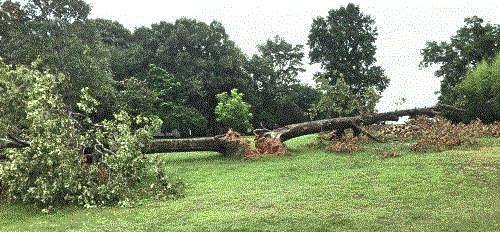
An outstanding example of what a strong wind can do to a tree with co-dominant leaders (trunks). This could have been prevented with proper pruning while this tree was in its juvinile years.
Generally speaking, the majority of structural pruning to maintain a central leader can be done in the juvenile growth phase, which varies from seven to 15 years for most trees. It should also be done annually to minimize the size of pruning cuts. And while most clients don’t quite understand why a tree should be pruned, explaining the risks to landscape clients is easily done by showing pictures of trees on homes!

Speaking of Pruning, How About Roots?
Last week, in my undergraduate Nursery Management class, I covered the basics of B&B production, which made me think of a very important aspect of B&B production that affects later landscape establishment success. Based on my experience, one of the most critical aspects of B&B production is something that's rarely practiced, being root pruning (a.k.a. “pre-digging”). It’s not complicated. Root pruning is a technique whereby six to 12 months before digging, a tree is spaded (yet not removed) with a slightly smaller spade than will be used to dig the tree (let’s say a 42-in. spade). Then at the time of digging, a larger spade (let’s say 48 in.) is used to dig the tree.

Pictured here is pre-digging of Little Gem southern magnolia in April. This tree will be dug for sale in August, allwing it time to initiate regrowth of roots, as well as adjustment of its root-to-shoot ratio ... both of which aid in landscape esteblishment.
In the interim, what happens is that the tree adjusts its root-to-shoot (canopy) ratio, preparing it for transplant. It also re-initiates fibrous root production near the root-pruning area, allowing the tree to be better prepared to initiate establishment upon transplant. The result is that root-pruned trees establish quicker and have a better chance of success in the long-term.
Does this add to the cost of B&B trees? Probably. Will it make your landscape clients happier in the long run? Absolutely.

NCNLA's Landscape Business Profitability Intensive
With demand for landscape business management education at an all-time high, the North Carolina Nursery & Landscape Association (NCNLA) is pleased to introduce a new, local, one-day intensive designed for landscape business owners and managers. And being in Charlotte, just about everyone can take advantage of the fact that Charlotte is a hub for American Airlines/US Airways to get to the event.
Partnering with the Carolina Green Industry Network (CGIN) and two of the country’s leading experts on landscape business profitability, NCNLA’s inaugural One-Day Profit Planning will launch on November 6, 2017 in Charlotte. Early bird registration for NCNLA’s One-Day Profit Planning will close on October 27.
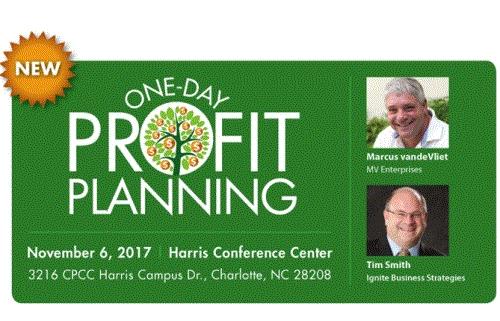
One-Day Profit Planning includes proven, real-world business management solutions to improve profitability for landscape firms of all sizes. The one-day intensive will include interactive sessions on:
-
Budgeting and Cost-Based Estimating – Overcoming the “guesstimate” to implement a budget and estimating system that captures direct costs, overhead and the profit margin you need to prosper. (Marcus vandeVliet – MV Enterprises)
-
Defining and Sizing Your Team for Profit – Defining and exploring the roles and quantity of team members needed to make your business profitable. (Tim Smith – Ignite Business Strategies)
-
Job Costing and Employee Accountability – Connecting your entire landscape project process, from estimating to sales to production, and establishing employee performance metrics for profitable delivery. (Marcus vandeVliet – MV Enterprises)
-
Proactive Sales, The Cash Machine – Uncovering the predictable outputs and improved profits that leveraging a proven sales process can bring to your organization. (Tim Smith – Ignite Business Strategies)
“’Do more to make more’ is often the sentiment of landscape business owners that struggle with their bottom line,” said Corey Connors of NCNLA. “Both Marcus and Tim are experts at providing real solutions for improving margins within their clients’ current book of business. Simply put, their clients make more money doing the work they already do.”

The Tale of Poly
It’s that time of year when, if you (nursery folks) haven’t already, you're wrapping houses in poly to protect plants. The question so frequently asked is what thickness of plastic is needed for your cold frames? A lot depends on Mother Nature, especially wind. Wind is absolutely your enemy. Generally, a minimum of 6-mil poly (properly installed) is needed for cold frames in areas with typical (max 30 to 40 mph) winds. In areas with less intense winds, 4-mil poly can be used, although I don't recommend it. As winds increase, so does poly thickness. Oftentimes, when I see major damage occur, it’s when growers install single-layer 3-mil poly.
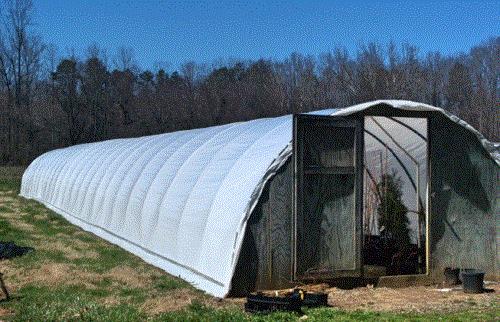
Poly choice comes down to two factors: clear versus opaque (which I will cover in the next newsletter) and thickness. For the difference in price, I would always go with a minimum of 6-mil poly!
The other management mistake made is when growers open the windward side end cap door and leave the leeward side door closed on warm days. In these cases, even a moderate wind (15 mph) with gusts can cause stress that will result in tears immediately or weak points that can tear later. Hopefully, these basic facts can help you out this coming winter to avoid serious damage, especially if you were trying to save a dime on poly.

Clematis armandii – Luscious!
It seems there's never enough variety when it comes to perennial/woody vines. It’s for that reason I try to tout those I find are easy (for a vine) to manage. Clematis armandii (Armand clematis, evergreen clematis) is one such vine that has merit. If it had a fault, it would be that it's not more cold tolerant, being only hardy to Zone 7a.
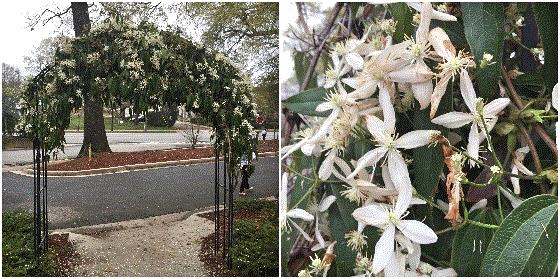
Evergreen clematis grows best in part-shade, but can take more sun farther north and should be in more shade farther south. As with most plants that fall into this part shade category, too much shade can reduce flowering. The plant can grow up to 20 ft. in length, be it over an arbor, trellis, pergola, etc. Flowers are white and typically occur as foliage is emerging by members of the red oak group.
Flowering generally lasts two to three weeks and is very pronounced. However, what I really enjoy about this plant is that it's quite clean (no foliar diseases or sunscald if grown in shade) year-round. I also prefer this plant because once trained upward for one to two years, rarely does it sucker from the base and try to run away, like many other vines do.

Our Wild and Wacky World – Notes from the Edge of Sanity
At the risk of promoting something that could draw attention away from this newsletter, I bring to you PlantPop. The brainchild of Art Parkerson, it's an amazing cornucopia of horticultural delight that keeps me intrigued. I particularly love the time-lapse work that Art is doing in his studio at Lancaster Farms.
While I can’t get into the mind of Art, and I'm not sure I would want to, I can say that PlantPop's work is inspiring. It's inspiring to me as someone with the artistic capability of a toad. More importantly, it's inspiring to those who don’t associate horticulture with art or recognize the beauty that surrounds them, likely because they're moving too fast to see it.
Case in point, I occasionally visit elementary school classes to talk about plants. How do you grab the attention of 20 first graders for five minutes? You can dissect a living organism, set something on fire or visually stimulate them with something completely new to them. For example, I now like to start with asking the question, “do plants move?” After a chorus of NOOOOOOOO – I show them this video.
The result is a room full of gaping mouths and a sudden interest in, of all things, plants. Even if for an instant, that’s a kid who now thinks plants are cool. That’s what we need as an industry. Well done, PlantPop!

Live authentic,

Matthew Chappell
Editor-at-Large
Nursery & Landscape Insider
This has been received by 28,834 of the hardest-working horticulturists in show business!
If you're interested in reaching 28,833 (and growing) clients who eagerly await every Nursery & Landscape Insider and surely read every word, contact Kim Brown ASAP and she'll hook you up.